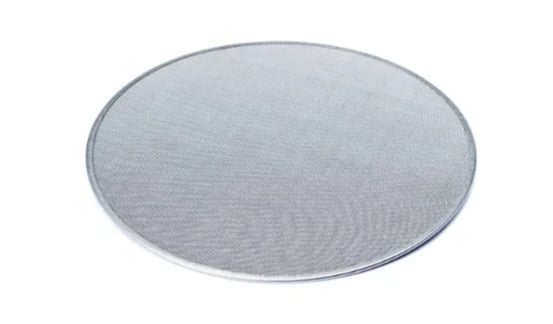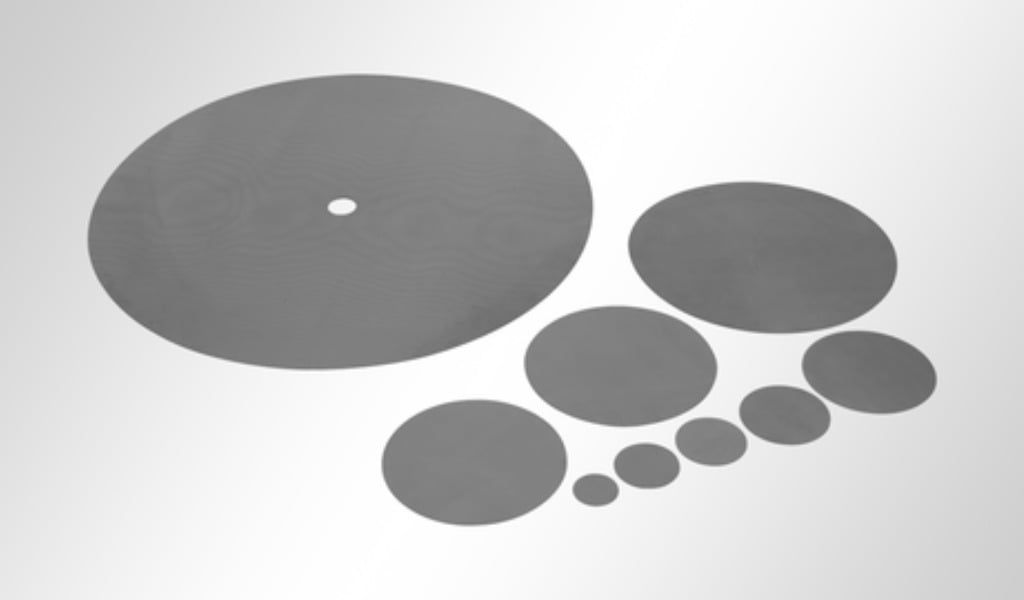Key Signs Your Chromatography Filter Plate Needs To Be Replaced
High-performance liquid chromatography (HPLC) is a critical scientific process that helps project innovation. The key to accurate and repeatable results rests in the dependency of your filter plate.
With woven wire chromatography filter plates in particular, wear and tear is to be expected despite their highly durable characteristics. This means that your filter plate will inevitably need to be replaced down the road.
But how do you know when it's time for replacement?
With over 150 years of woven wire experience, W.S. Tyler is dedicated to creating a cleaner, safer world through innovative woven wire solutions. An integral part of this mission is helping woven wire users fully understand what to expect when using the versatile material.
To help, we wrote the following article to highlight the events that indicate that it's time to replace your chromatography filter plate. It will cover:
- What a chromatography filter plate is
- The functions your chromatography filter plate should deliver
- The signs that will help you identify when your chromatography plate needs to
be replaced. - Whether or not your chromatography filter plate can be repaired
What Is a Woven Wire Chromatography Filter Plate?

A woven wire chromatography filter plate is designed to provide high-throughput and peak separation of a mixture when conducting chromatography. Comprised of durable wires interwoven to form a specific weave pattern, they provide optimal strength, corrosion resistance, and long-lasting performance.
In recent years, multi-layered solutions like POROSTAR have gained industry traction. POROTAR consists of a designated number of woven wire layers, each with its own specifications.
A specialized sintering process is applied to create a permanent bond between these layers without altering their physical properties. This leaves you with a filter plate with the permeability, micron rating, porosity, and pore distribution you need to achieve peak separation.
What Are the Functions of a Chromatography Filter Plate?
Woven wire chromatography filter plates are put in place to facilitate the accurate isolation and extraction of the individual elements that make up a mixture. Considered an open product, the prosurs properties of woven wire allow the mixture to pass freely at variable speeds.
This allows you to target specific elements of a mixture. This, in turn, enables you to confidently conduct the elution process.
Looking for more insight into POROSTAR and the functions it provides in the chromatography process? Read the article below:
How Do I Know When My Filter Plate Needs To Be Replaced?
Replacing your woven wire chromatography filter after prolonged use is key to achieving accurate and repeatable results. But how do you determine when to replace the filter plate?
Well, more often than not, signs will appear visually or through noticeable performance changes.
For example, you may notice that tremendous loads are building within your system due to a reduced flow rate. This is often a telling sign that the pores of your woven wire have become clogged.
In more extreme situations, the clogs can become extremely stubborn and nearly impossible to clean. In these cases, a replacement filter plate is often implemented.
Another key indicator can be found in your findings. Unusual peaks or contaminants in your results can be caused by a fault in your woven wire filter plate.
If you continue to notice signs of inefficient separation or screening, you will want to replace or repair your filter.
Over time, you may notice leaks in your system and that your filter plate can no longer be housed properly. This is more than likely caused by wear and, you guessed it, will need to be replaced.
Now, with cleaning being a key step in routine maintenance, it is important that you are mindful of what chemicals you use. Harsh chemicals can alter the integrity of the mesh specifications and permanently damage the performance of the filter plate.
But even if you treat your woven wire with the utmost care and nothing goes wrong, there are standards set by the industry and recommendations set by manufacturers that dictate replacement times. These times are typically based on specific time periods, the number of uses, and the mixtures being run.
Can I Repair a Faulty Chromatography Filter Plate?
In certain scenarios, woven wire chromatography filter plates can be repaired before a total replacement. This entails repairing the faulty section of the woven wire element.
During the repair process, the damaged section is cut out, and a new segment of mesh that shares identical specifications is welded in its place. As each weld is applied with care, the seams have virtually no impact on the performance of the filter plate.
However, repairs are typically reserved for filter plates that exceed a 4-foot diameter. If your filter plate falls within this threshold, replacement may be a more feasible option.
Prevent Costly Faults With the Right Woven Wire Alloy
From inconsistent results to industry standard designations, there are a handful of reasons that can lead to the replacement or repair. Larger elements can be repaired to eliminate the costs of purchasing a new filter plate, whereas smaller elements can be replaced relatively economically.
Now, as stated in the article, the need to repair or replace a woven wire filter palette is bound to happen. Fortunately, there are things you can do, such as selecting the best possible woven wire alloy, that will prolong the lifespan of your filter plates.
Here at W.S. Tyler, we understand just how important it is to be confident in your woven wire. This is why we leverage the expertise we have within our four walls to help you navigate the intricacies surrounding the material.
Read the following article to find out more about the two most widely used alloys in the chromatography industry, Hastelloy and 316 stainless steel:
About Ronnie Brown
Ronnie is the Content Writer for W.S. Tyler and has four years of experience as a professional writer. He strives to expand his knowledge on all things particle analysis and woven wire mesh to leverage his exceptional writing and graphic design skills, creating a one-of-a-kind experience for customers.




